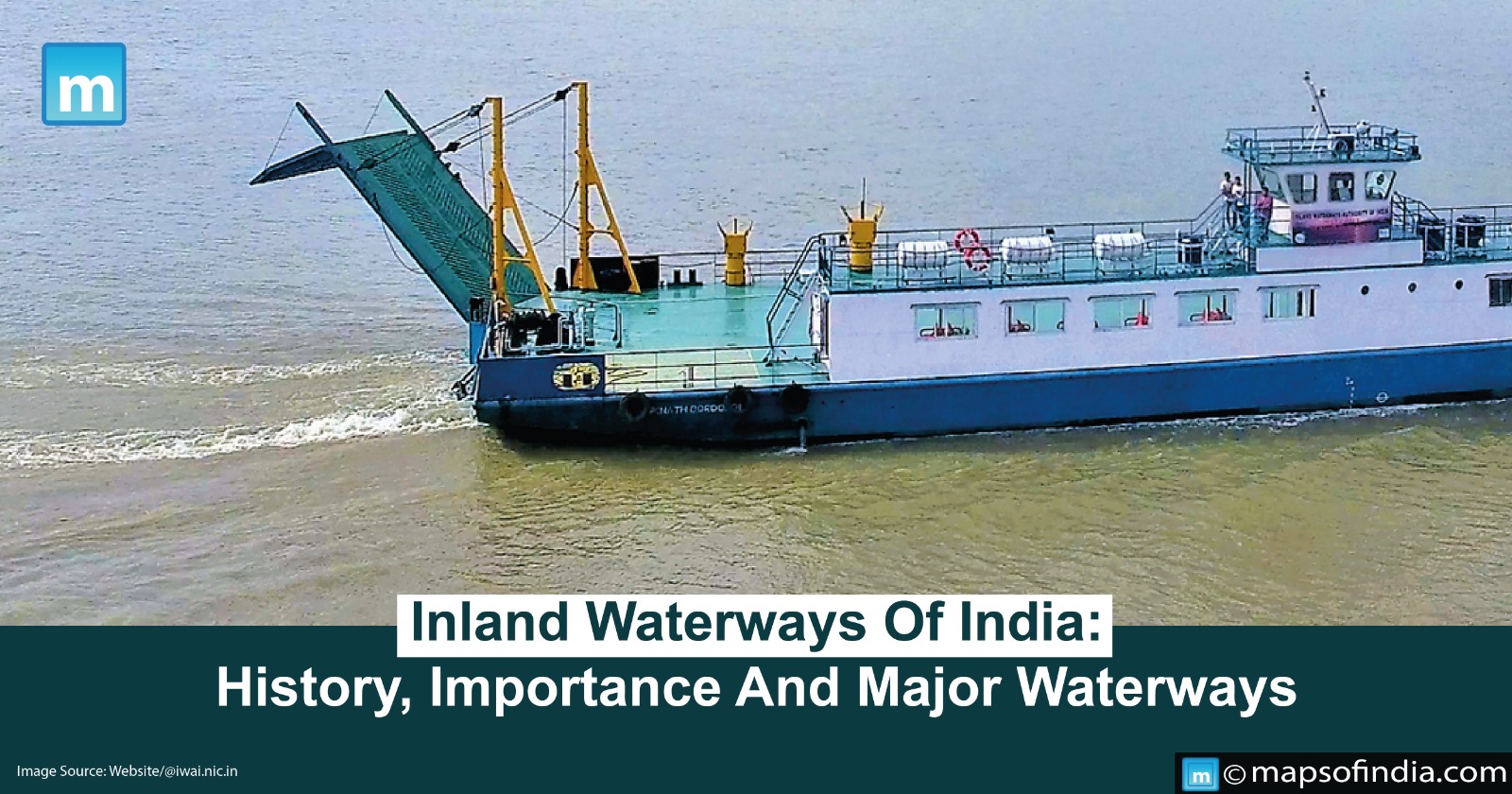India has a vast network of inland waterways that have played an essential role in the country’s economy and transportation system for centuries. With a coastline of over 7,500 km, 14,500 km of navigable waterways, and over 200 ports, India’s inland waterways system is a crucial aspect of its infrastructure. In this article, we will explore the significant inland waterways of India and their significance.
What are Inland Waterways?
Inland waterways are natural or artificial water channels for transportation, irrigation, and other commercial purposes. In India, inland waterways have been used for centuries for transportation, trade, and commerce. India has five major rivers, including the Ganga, Brahmaputra, Godavari, Mahanadi, and Krishna, forming a vast network of waterways.
History of Inland Waterways in India
The history of inland waterways in India can be traced back to the Indus Valley Civilization, which developed around the Indus River. The ancient Indians were skilled in building water transport systems, and they used boats made of reed, bamboo, and other natural materials to transport goods and people. The Maurya dynasty (321-185 BC) built a network of canals to irrigate their agricultural lands.
Later, during the Mughal period, the Grand Trunk Road was constructed, connecting the ports of Kolkata and Dhaka with the country’s interior through the Ganges. During British rule, the inland waterways were developed further, and many canals were constructed, including the Buckingham Canal, which connected Chennai with Kolkata.
Importance of Inland Waterways
Inland waterways are an essential means of transportation for goods and people in India. They are cost-effective, energy-efficient, and eco-friendly compared to road and rail transport. The cost of transportation through inland waterways is much lower than road and rail transport, which makes it a preferred mode of transportation for bulk goods like coal, iron ore, cement, and fertilizers. Inland waterways also reduce road congestion, air pollution, and carbon emissions, which makes them environmentally friendly. They also have the potential to promote tourism and generate employment in the riverine areas.
Current State of Inland Waterways in India
The Inland Waterways Authority of India (IWAI) is the nodal agency responsible for developing and maintaining inland waterways in India. The IWAI was established in 1986 and has been working towards developing inland waterways in the country. Recently, the government has taken several steps to promote inland waterways in India.
Some of the major waterways in India
-
National Waterway-1
National Waterway-1 (NW-1) is the longest inland waterway in India and runs along the Ganga River from Haldia in West Bengal to Prayagraj in Uttar Pradesh. NW-1 is a 1,620 km-long waterway that passes through several important cities, including Kolkata, Varanasi, and Patna. It is also connected to major ports such as Kolkata, Haldia, and Paradip. NW-1 is a significant transportation route for coal, fertilizers, and food grains.
-
National Waterway-2
National Waterway-2 (NW-2) is an 891 km-long waterway that runs along the Brahmaputra River from Dhubri in Assam to Sadiya in Arunachal Pradesh. It is the second-longest inland waterway in India and passes through several important cities, such as Guwahati and Dibrugarh. NW-2 is a crucial transportation route for tea, coal, and petroleum goods.
-
National Waterway-3
National Waterway-3 (NW-3) is a 205 km-long waterway that runs along the West Coast Canal in Kerala. NW-3 connects Kollam in Kerala to Kottapuram in the Thrissur district. It is an important transportation route for timber, coconut, and sand.
